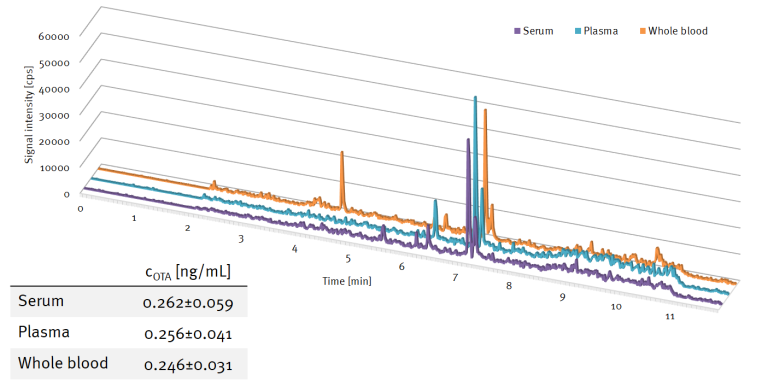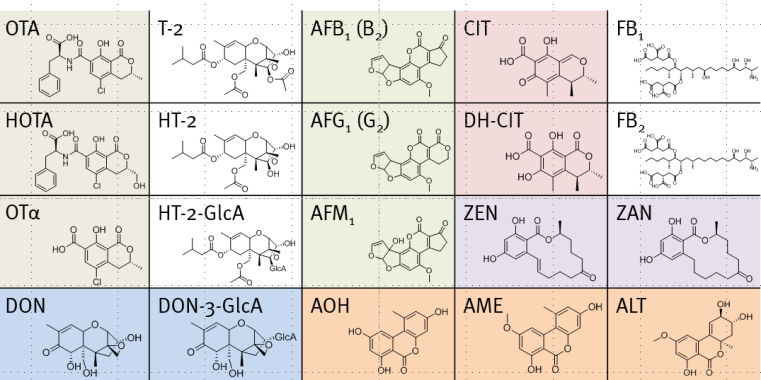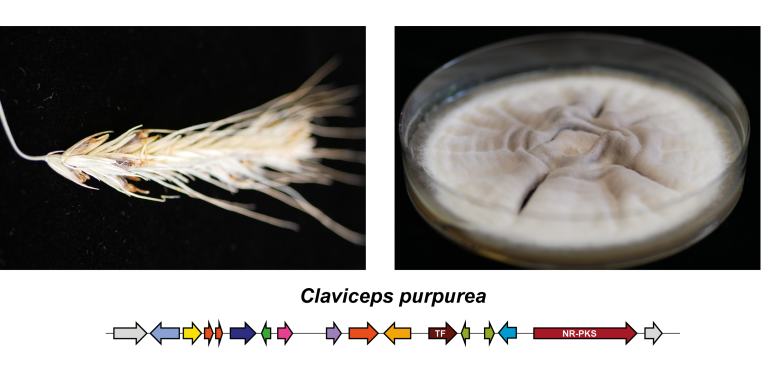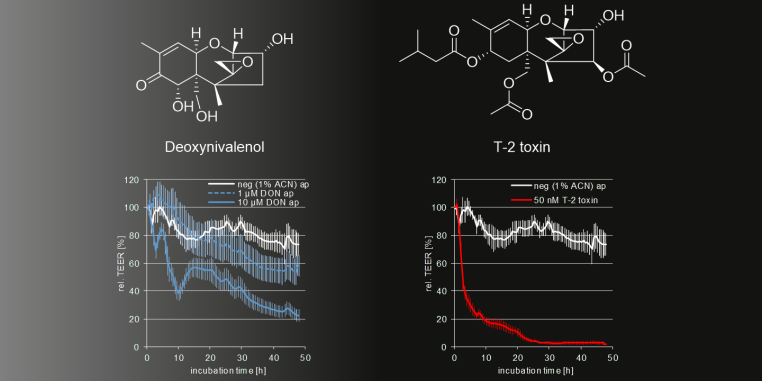









The group of Prof. Dr. Hans-Ulrich Humpf is interested in the biosynthesis, toxicity and (intestinal) metabolism of mycotoxins as well as the thermal stability during food processing. Further focus is given to the development of human biomonitoring methods (HBM) to evaluate the exposure to mycotoxins and metabolomics-based approaches to analyze nutritional habits. Moreover the transfer of food constituents across the intestinal barrier (Caco-2 model) as well as the blood-brain-barrier is studied.
Using urine and blood analyses to make reliable statements about nutrition and exposure to contaminants - that is the long-term goal of this research area in the Humpf working group. To achieve this, we are working on several sub-projects in parallel. One of these sub-projects was the determination of valid biomarkers for the consumption of specific foods, such as apples, bell peppers, or tomatoes. Further studies will combine these in a multi-method approach and expand them to include additional biomarkers.
In the area of mycotoxins, research has already made progress: many but not all relevant metabolites of mycotoxins are known. In this area, our research focuses on developing new methods for more sensitive detection of mycotoxins in physiological samples, e.g., by using online SPE-UHPLC-MS/MS coupling. At the same time, we are investigating, together with many different cooperation partners, the exposure of certain population groups in Germany and worldwide to mycotoxins. The goal is, among other things, to examine a possible link between high mycotoxin exposure and the occurrence of growth stunting in children in developing countries.
Some recent publications:

Muesli, cornflakes, or puffed grain products are a popular way to start the day for many consumers. Especially when these breakfast cereals have a relatively low sugarand a high whole grain content, they can also be considered a healthy breakfast option.
During the production of these products, thermal processes are applied that, in addition to the desired properties such as texture and aroma, also lead to the formation of unwanted substances known as process contaminants. One group of these contaminants is furans, particularly furan and 2-methylfuran.
To achieve a minimal content of these substances, we are working on a current research project to identify which processing conditions and ingredients are responsible for furan formation. Our goal, together with our project partners, is to use these results to develop new processes or recipes that lead to a minimal furan content.
In practice, this means that we simulate manufacturing processes in the laboratory, using various ingredients such as different sugars or fats. Additionally, temperature and other processing conditions are systematically varied.
The results achieved during the first phase of the project were published open access in the journals European Food Research and Technology, ACS Food Science and Technology, and Food Control.
Lipinski, S.; Lindekamp, N.; Funck, N.; Cramer, B.; Humpf, H.-U. Determination of furan and alkylfuran in breakfast cereals from the European market and their correlation with acrylamide levels. European Food Research and Technology 2024, No. 250, 167–180. DOI: 10.1007/s00217-023-04374-y
Lipinski, S.; Becker, M.; Meyer, J. C.; Nowakowski, C.; Humpf, H.-U.; Cramer, B. Impact of Physicochemical Parameters on the Furan, Alkylfuran, and Acrylamide Formation during Extrusion Cooking of Breakfast Cereals. ACS Food Science & Technology 2025. DOI: 10.1021/acsfoodscitech.4c00727
Lipinski, S.; Becker, M.; Lindekamp, N.; Humpf, H.-U.; Cramer, B. Formation of furan, alkylfurans and acrylamide during breakfast cereal manufacturing: Comparison of model experiments with industrial processes. Food Control 2026, 179, 111598. DOI: 10.1016/j.foodcont.2025.111598